Mercedes W246 B-Class 2011 –


The design
Perfect space in a most attractive guise
- Exterior: sporty interpretation of the current design line
- Interior: a new dimension of quality in the compact class
The new B-Class is a typical Mercedes sports tourer, offering plenty of space combined with impressive dynamic performance as a hatchback saloon.
The characteristic lines of the exterior design indicate both of these attributes: front and rear sport a width-emphasizing design.

The front features a wide, prominent grille. The air intake under the grille widens trapezoidally towards the outside, featuring round LED daytime driving lights, while the darkened halogen headlamps with reflector technology extend from the radiator grille to the sides.

The appearance at the rear is shaped by the wide rear window, the two-piece tail lights with horizontally offset meander and the wide tailgate extending far down for a low loading sill, with chromed handle strip and LED licence plate illumination (optional extra).
The two-piece tail lights extending from the tailgate to the sides break down into three horizontal bars – red-clear-red.

The light package results in a distinctive, sporty lighting scenario with tail lights featuring LED fibre optic technology. A powerful rear bumper in body colour with black grained lower part in diffuser look adorns the bottom of the rear end.

The Bi-xenon option with Intelligent Light System includes a particularly striking feature of the front view in the form of the so-called spotlight over the headlamps.
The LED element provides a distinctive feature at night-time while also serving as a turn signal indicator.
A horizontal LED daytime driving light is positioned in the bumper. Additional sealing is provided between the headlamps and the body, for improved aerodynamics.

The new sportiness and the outstanding
aerodynamics are particularly evident in the side line: the bonnet flows seamlessly into the A-pillar and the roof line descends sleekly to the striking roof spoiler.
The roof features a swage line which lends the vehicle a longer appearance.

The side windows have no visible door frames, underscoring the stylish, sporty character of the new B-Class.
The pronounced wheel arches offset by dynamic feature lines under the beltline are a sporty interpretation of the current design line from Mercedes-Benz.

The bottom edge of the body features dynamic side skirts which add a light touch to the vehicle’s appearance.
Refined details such as the exquisitely designed headlamps with the new spotlight element confirm the brand’s unmistakable premium credentials which shine through in the compact segment, too.

The interior: emotional design with sporty attributes
High-quality materials and finely structured surfaces, stylish details, precision workmanship and a new spaciousness – the interior of the B-Class defines a whole new benchmark in the compact segment. In the interior, the large, three-dimensional trim covering the entire dashboard first strikes the eye.

The three large round vents in the middle and their uniquely designed cruciform nozzles add a sporty attribute to the interior’s emotional design idiom.
The display, which is available in two sizes with a diagonal or 147 or 178 millimetres, appears to hover over the vents.
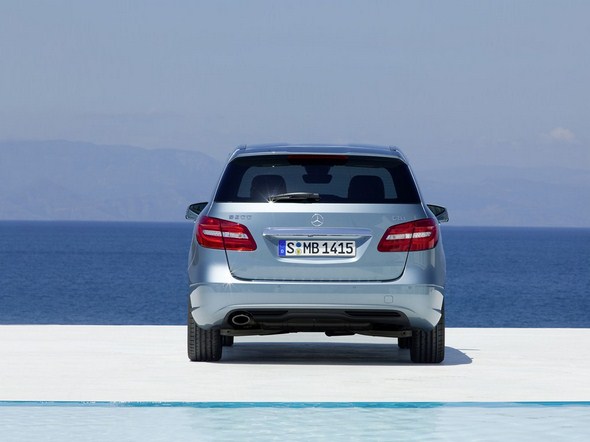
With its stylish design – the trim frame with galvanised finish contrasting with the piano black of the front panel – and slender lines, the colour display (TFT) is a highly attractive showpiece in the cockpit.
The menus on the display are operated by means of rotary pushbuttons in the centre console.

The “hovering” screen concept also serves two additional effects: the screen blends more harmoniously into its surroundings while at the same time conjuring up an impression of greater space in the centre of the instrument panel.

The 3-spoke steering wheel, which always features a matt chrome insert in the middle spoke, the instrument cluster with four analogue round dials and suspended pointers in 6 o’clock position and the seats with contrasting stitching underscore the sporty character.

The instrument panel features a matt, soiling-resistant surface with a pleasant, quality feel. The large trim situated centrally in the driver’s and front passenger’s field of vision is available in four variants covering a broad spectrum from modern through sporty to classic.
Common to all versions is a high-class appeal combining an attractive look and feel with easy care and durability.

Instead of a high-gloss black finish, the trim on the basic model features the fine “Matrix” pattern on a piano lacquer-like background, for example.
The trim is produced by means of the IMD technology (In-Mould Decoration), which involves spraying thermoplastic onto the backs of printed films in the mould. This results in mouldings with an excellent surface finish and quality appeal.

The trim in the Sports package is also produced by means of IMD. Here, the film is printed on both sides, creating an impression of even greater depth.On closer examination, the fascinating trim surfaces thus reveal further interesting details.
In the Exclusive package the trim is available in real matt walnut veneer. The trim is optionally available in high-gloss black ash. All the metallic surfaces in the interior are also genuine, thanks to electroplating.
Various items, such as the outer ring on the round vents, the frame of the colour display and the upper shell of the shift lever, are finished in shimmering silk matt silver shadow.
All silver surfaces possess the same lustre and the same surface quality, lending the interior a seamless appearance.

The high-quality impression is reinforced at night by the ambient lighting which is available in the Light and Sight package. A fibre-optic cable in the bottom edge of the trim diffuses gentle amber light.
The scope of the ambient lighting also includes the front footwell lighting and the illuminated handle recesses on all doors.
The interior
Segment-leading legroom
- Spacious: plenty of room in all seats and in the luggage compartment
- Flexible: EASY-VARIO-PLUS system with adjustable rear seats
- Practical: height-adjustable luggage compartment floor and a host ofstowage facilities
While the design of the new B-Class continues to offer space in abundance, the line’s new dynamic character is directly apparent in its exterior dimensions.
The most striking aspect is the reduced height: at 1557 millimetres, the new model crouches almost five centimetres lower on the road than its predecessor.
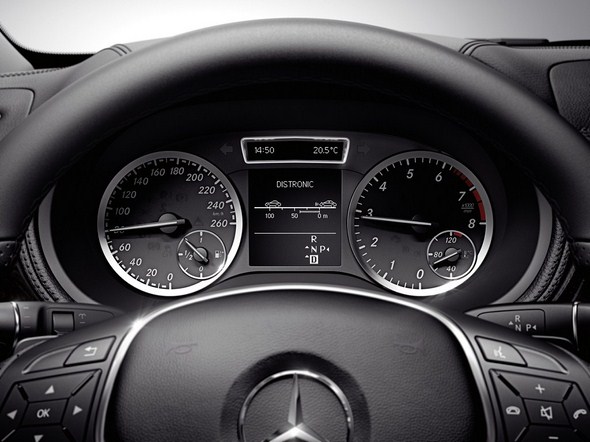
The seat height in relation to the road has also been reduced (minus 86 mm). At the same time, this seat height also makes rolling movements substantially less noticeable.
In response to requests from many customers, the sitting position is more upright, however.

At the same time, the headroom has been further improved. With maximum headroom of 1047 mm at the front (without sliding roof), the B-Class is among the most spacious cars in its segment in this discipline, too.

The ergonomically expedient more upright sitting position in combination with a lowering of the vehicle’s floor at the rear leads to a segment-leading degree of legroom (976 mm).
The B-Class offers plenty of space for luggage, too. The luggage compartment has a capacity of 488 litres on the basic model. Even more important than this abstract volumetric measurement is the actual usable volume.

The B-Class comes up trumps here with a luggage compartment width between the wheel arches of 1050 millimetres (40 mm more than its predecessor).
Six crates of mineral water, each containing 12 0.7-litre bottles, or three medium-sized packing cases (measuring 440 x 345 x 470 mm) can be transported without uncroaching on the space available in the second row of seats.

As a particularly convenient feature, the loading sill has been lowered by five millimetres in comparison to the predecessor and is now at a height of 616 millimetres.

The rear seat backrest comes as standard in a folding variant with a 60:40 split. As an option, the B-Class is alternatively available with the so-called EASY-VARIO-PLUS system. This enables flexible reorganisation of the interior in next to no time.
Features of the EASY-VARIO-PLUS system include separate fore/aft adjustment of the rear seats by up to 140 millimetres. The luggage capacity then increases from 488 to 666 litres.

The inclination of the rear seat backrest is also adjustable. In so-called cargo position, a washing machine can be transported with the tailgate closed without folding the backrest down, for example.

Equally, nine crates of mineral water or six medium-sized packing cases fit under the tailgate in this position.
With the EASY-VARIO-PLUS system, the backrest of the front passenger seat can additionally be folded down onto the seat cushion to enable the transportation of long objects.

The height-adjustable luggage compartment floor also offers added variability according to individual needs. It can be moved into two different positions with one hand and locked firmly into place.

In the upper position the luggage compartment floor forms a continuous surface with the load sill, facilitating loading and unloading.
The rear seat backrests can be folded forward to produce a level load surface. An additional 72 litres of stowage space is then available under the loading floor. On the basic version the floor is limited to the lower position, but is removable.

The deployment of the electric parking space and the resultant omission of the handbrake lever gives rise to key advantages regarding the design of the tunnel trim and the area of the centre armrest.
A stowage compartment has been integrated in the resultant space under the hinged armrest, which is optionally available as a sliding version.
The interfaces to the mobile communication devices are located here: AUX (option: UCI) and USB connection and the entire comfort telephony.

In conjunction with the DCT transmission, whereby the shift lever is relocated from the tunnel trim to the steering wheel as the DIRECT SELECT lever, additional stowage space becomes available, Other stowage facilities include the door pockets, which now securely accommodate 1.5-litre bottles on the driver’s and front passenger’s side.
A special compartment for the reflective safety jacket which is required in many countries is also to be found here.

There is an umbrella holder next to the driver’s and front passenger’s seat, and stowage compartments are incorporated on the left and right of the luggage compartment.

Optional extras include fold-out stowage compartments under the driver’s and front passenger’s seat, folding tables on the front seat backrests and an insert for a double cup holder for the stowage compartment in the tunnel trim between the front seats.
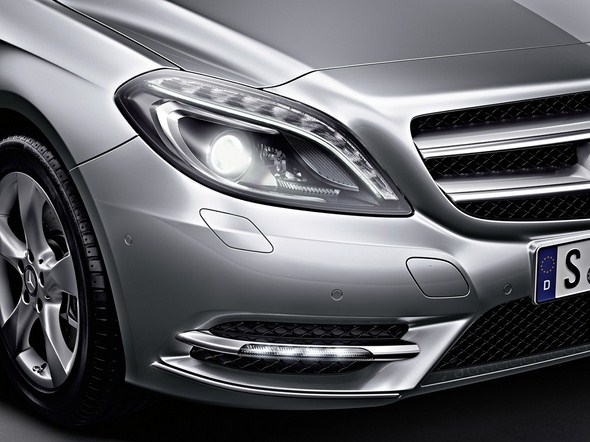
The model range
Compact class for experts
- Individual: Chrome, Sports, Exclusive and Night package
- New to this class: PRE-SAFE® and front seats with memory function
- Feel-good factors: ergonomic seats with plenty of lateral support

From radar-based COLLISION PREVENTION ASSIST to the Audio 20 CD multimedia unit with colour screen, Bluetooth connectivity and USB port, the B-Class offers a host of extra safety and comfort features as standard, even in its basic version.

Four equipment packages (Chrome, Sports, Exclusive and Night package) enable individualisation of the vehicle’s exterior and interior.
Beyond this, the customer can choose from a range of optional extras, some of which have been the reserve of higher vehicle classes to date.
These include the dashboard in ARTICO man-made leather, front seats with memory function and the PRE-SAFE® preventive occupant safety system (see “Passive safety” section), for example.

Something for everyone: four equipment packages
A B-Class upgraded with the Chrome package is identifiable from the outside by virtue of three slats in brilliant silver on the radiator grille and chrome applications in the front and rear bumpers.
Additional exterior features are daytime driving lights with chrome ring, the beltline trim strip in chrome, the electroplated load sill protector and the oval stainless steel tailpipe trim.

Inside, the Chrome package includes the Matrix-look trim, air outlet vents with nozzle ring and cross in silver chrome, chrome rings for the rotary light switch, the central operating unit and the controller on the centre console, and a shift/selector lever with applications in silver shadow.
The armrests in the doors and the centre armrest feature contrasting stitching.
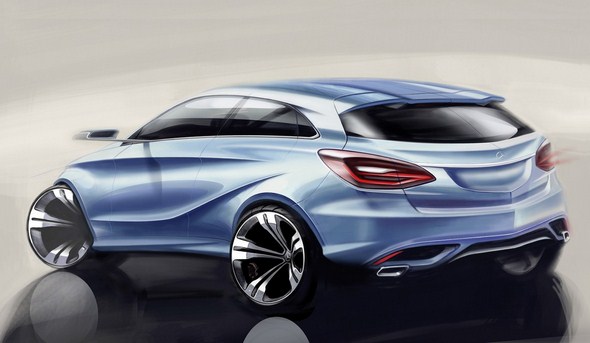
The Sports package offers significantly more sportiness. Here the radiator grille features double slats in brilliant silver with chrome applications, while the front bumper incorporates a diamond-pattern air intake grille with chrome applications.

Chrome also features on the rear bumper (chrome applications on the outsides), the daytime driving light (chrome ring) and the beltline trim strip. 17-inch light-alloy wheels in 5-spoke design come as standard.
The front brake discs are perforated and the front callipers feature “Mercedes-Benz” lettering.

The sports suspension with selective damping system and the Direct-Steer system with variable power assistance and steering ratio provide for more dynamic handling, but can be deactivated as appropriate.

Inside, the Sports package includes seats in ARTICO man-made leather / Den Helder fabric with contrasting stitching, honeycomb-pattern trim, air outlet vents with ring and cross in silver chrome, high-gloss black rotary light switch with ring in silver chrome, 3-spoke perforated leather multifunction sports steering wheel with 12 function buttons, leather shift/selector lever with applications in chrome, front and rear door sill panels in extruded stainless steel and sports pedals in stainless steel look with rubber studs.

In contrast to the Sports package, the Night package offers the followingspecial exterior features:
- radiator grille with double slats in high-gloss black with chromeapplications
- bumpers without chrome applications
- roof trim strip in high-gloss black
- beltline trim strip in high-gloss black
- heat-insulating dark-tinted glass as of B-pillar
- 18-inch light-alloy wheels in 5-twin-spoke design, painted blackwith high-sheen finish, with 225/40 R 18 tyres
The Exclusive package which is available in addition to the Chrome, Sports or Night package does full justice to its name, featuring a highly stylish interpretation of the compact class with contrasting stitching, dashboard and door centre panels in ARTICO man-made leather and brown silk matt burr walnut trim.

The scope of equipment includes a 3-spoke leather steering wheel with 12 function buttons, comfort locking system (infrared), electric 4-way lumbar support on the front seats and heated seats.
Plenty of lateral support and a pleasant seat climate: the seats
The front seats of the B-Class feature comfortable upholstery and ergonomic contours. Attractive seat covers exude high-class appeal.
Characteristic features of the standard front seats are high seat comfort with excellent lateral support due to high backrests and pronounced side bolsters, a pleasant seat climate resulting from high air permeability and high moisture absorbency, and a reduced risk of whiplash injury thanks to newly developed head restraints.

The Seat Comfort package allows 6-way adjustment of the driver’s and front passenger’s seat. The rear seats make a major contribution to the high variability of the B-Class.
The rear seat modules offering separate fore/aft adjustment are a special highlight in conjunction with the optional EASY-VARIO-PLUS system(see Interior section).
The standard rear seat bench offers the following features:
- generous legroom for a high standard of comfort in all seats
- rear seat backrests can be folded down with a 1/3 to 2/3 split, formingan almost flat load compartment floor in lowered position
- middle head restraint is designed for minimal interference with visibilityto the rear
- ISOFIX child seat anchorage points with TopTether on the outer rear seats

Other optional extras
The B-Class is optionally available with bi-xenon lights instead of halogen lights.
The latter are furthermore optionally combinable with the Intelligent Light System (ILS). ILS, which is familiar from other Mercedes model lines, comprises bi-xenon headlamps with variable light distribution and dynamic headlamp range for country roads, motorways and dense fog,
AdaptiveHighbeam Assist, active light function, LED daytime driving lights and headlamp cleaning system.

A swing-away trailer coupling is available for the B-Class for the first time. The control unit for the swivel system is readily accessible on the left of the luggage compartment.
After mechanically releasing the trailer coupling on the control unit, ball neck and socket can be swivelled into towing or rest position. In rest position, they are both accommodated out of sight behind the bumper.
The range of optional extras further includes front seats with memoryfunction, automatically dimming rear-view and exterior mirrors, and electrically operated panoramic glass sunroof with tilting/sliding function and a stowage facility package.

The latter comprises a spectacles compartment in the overhead control panel, a stowage box under the front seats, parcel nets on driver and front passenger seat backrest, a collapsible box in the luggage compartment floor and folding tables on the front seat backrests.

A reversing camera is optionally available. This is activated automatically when reverse gear is engaged. It supports the driver during lengthways and crossways parking manoeuvres by means of static and dynamic guide lines indicating the vehicle’s line of travel and clearances.
Active Parking Assist offers even greater comfort here (see section “Driving assistance systems”).

Under the microscope
More comfort, more efficiency: the new air conditioning systems
A new generation of air conditioning systems is being premiered in the B-Class. THERMATIC manual air conditioning (standard) and THERMOTRONIC comfort automatic air conditioning (optional) feature a host of improvements over their predecessors.

The new air conditioning systems are noticeably quieter and generate markedly less vibrations, as the blower motor is mechanically decoupled from the housing with the aid of special rubber elements.
The systems furthermore offer optimised air intake in snowy conditions and offer more manual blower levels.

The efficient use of drive energy also constituted a key development objective. The air conditioning compressor operates according to the actually prevailing requirements: in dry weather or at temperatures in which no cooling is necessary, the air conditioning system carries out automatic and infinitely variable lowering of the compressor output.

For this purpose, the B-Class possesses a special window misting sensor in the base of the rear-view mirror which measures the window temperature and the interior humidity and is thus able to detect whether the window is misted over.
A further aid to the efficient use of fuel is an internal heat exchanger which enables a reduction in the drive power of the refrigerant compressor.
Supply and return of the refrigerant take place in separate but adjacent channels. As a result of this separate channelling of the two refrigerant flows, the refrigerant in the supply channel undergoes additional cooling without consuming any additional energy.

The ECO start/stop function is linked to the air conditioning system, which monitors regulation of the interior temperature and then enables the stop function. Automatic air conditioning continues during stop phases.
Aerodynamics
Taking the drag out of aerodynamics
- New benchmark for cars with station wagon rear end: cd = 0.26
An outstanding drag coefficient of cd = 0.26 places the new B-Class at the forefront of its market segment. In practical driving, aerodynamics have a crucial influence on fuel consumption: an improvement in the cw value of just 0.01 results in fuel savings of up to 0.4 litres per 100 kilometres at a speed of 130 km/h.

“A whole range of measures were necessary in order to attain the excellent drag coefficient of cw = 0.26,” explains Dr. Teddy Woll, Head of Aerodynamics at Daimler AG.
“Apart from an aerodynamically efficient basic design, these include numerous optimisation measures on points of detail, such as the air flow around the front wheels, the underbody design and the flow of cooling air.”

Designers and aerodynamicists worked closely together. Aerodynamically efficient lines are demonstrated by the exterior mirrors with braces, for example.
The low height of the shoulder on the A-pillar with optimised geometry also contributes to the good aerodynamics. The entire front apron is sealed, including special seals fitted on the headlamps, for example.
The large roof spoiler at the rear provides for defined flow separation.

Flow losses at the front wheel arches have been reduced substantially with the aid of innovative serrated wheel spoilers at front and rear – patent pending -, slots in the wheel arches and optimised hub caps.
These measures result in improved wind flow around the wheel arches.

Equally comprehensive measures have been undertaken to design the underbody along aerodynamic lines. The main floor panel features extensive cladding up to the rear wheel arch, followed by additional cladding of the rear axle.

The rear silencer has also undergone aerodynamic optimisation. The improved cooling air flow by means of an adjustable radiator shutter is familiar from other Mercedes models.
This feature enables infinite adjustment of the air flow through the engine’s cooling module and the engine compartment by means of a circular louvred shutter installed in parallel with the fan.
When there is no special need for cooling air, the shutter is closed.

This improves the aerodynamics and reduces fuel consumption. The aerodynamics of the new B-Class were optimised at an early stage in the development process by means of complex computer calculations and flow simulations.
Over 275,000 CPU hours were required for the purposes of digital flow simulation. Models and prototypes spent around 1100 hours in the wind tunnel for measurement purposes.

The driving assistance systems
Greater safety in the compact class
- World first: radar-based collision warning system as standard
- Democratisation: total of ten new assistance systems
- Comfort programme: cruise control and Active Parking Assist
The B-Class provides its drivers with comprehensive support and protection by means of numerous driving assistance systems, from drowsiness detection with ATTENTION ASSIST to proximity control with DISTRONIC PLUS.
These assistance systems, which have been the reserve of higher vehicle segments to date, are based on state-of-the-art radar, camera and sensor technology and are designed to address the common causes of accidents, such as inadequatedistance, fatigue and darkness.
As a world first in the compact segment, the B-Class features a radar-based collision warning system with adaptive Brake Assist as standard, which can lower the risk of rear-end collisions.
The COLLISION PREVENTION ASSIST system is able to output a visual and acoustic warning to alert a distracted driver and prepares Brake Assist for the most precise possible brakingresponse.
This is initiated as soon as the driver emphatically operates the brake pedal.
In contrast to systems currently on the market in the compact class, the new COLLISION PREVENTION ASSIST feature is not merely a system intended to minimise minor damage in urban traffic.
Rather, this innovative solution is aimed at protecting motorists from typical rear-end collisions in dangerous traffic situations.
Mercedes-Benz expects the new safety system to have a significant positive effect on accident statistics.
On the basis of detailed analyses of accident data, Mercedes-Benz safety experts assume that around 20 percent of all rear-end collisions can be avoided with this radar-based technology, while the severity of such accidents can be reduced in a further 25 percent of cases.

Electronic helpers: all the other assistance systems at a glance
The democratisation of safety also encompasses an array of other assistance systems which have been adopted into the B-Class from the larger model series. These include:
- Adaptive Highbeam Assist: when vehicles are detected ahead of or oncoming to the vehicle, this system automatically dips the beams and adjusts the range of the headlamps
appropriate to the distance. The driver benefits from a longer dipped beam range and does notgenerally need to switch manually between high and dipped beam. - Blind Spot Assist: this radar-based system employs two additionalradar sensors in the rear of the vehicle to warn the driver before a lane-change if it detects another vehicle in the exterior mirror’s blind spot.
- Lane Keeping Assist: a camera behind the windscreen recognises clear carriageway markings and outputs a warning if the car is aboutto leave its lane unintentionally.
- ATTENTION ASSIST
(standard): warns drivers when it detects typical signs that they are over-tired. Studies have shown that around aquarter of all serious motorway accidents are caused by drowsydrivers, making this factor an even bigger cause of accidents than drink-driving. With ATTENTION ASSIST, Mercedes-Benz is therefore making another important contribution towards helping to avoidaccidents: it employs high-resolution sensors to observe driverbehaviour and can recognise whether the driver is tired or not paying
attention, based primarily on steering wheel movements. - Speed Limit Assist:
a camera fitted behind the windscreen detects speed limit signs at the roadside and compares this data to information contained in the GPS system or the digital map. The relevant speedlimit is then displayed in the instrument cluster. - Brake hold function:
when stopping, for example at traffic lights, the driver merely has to press the brake pedal slightly more firmly. Hecan then take his foot off the brake pedal and the brake will remainengaged until he moves off again. The brake is released automatically when the driver steps on the accelerator. - Hill Start Assist:
this function is able to prevent the vehicle fromrolling back unintentionally when moving off on an uphill slope. - Reversing camera:
The B-Class is optionally available with a reversing camera incorporating a wide-angle lens which is integrated in thehandle strip on the tailgate. When reverse gear is engaged, the image from the camera is transmitted to the screen of the Audio 20 system or the COMAND system. Static and dynamic guide lines assist the driver during manoeuvring. - DISTRONIC PLUS:
the radar-based adaptive cruise control supports the driver at speeds between zero and 200 km/h by maintaining the distance to the vehicles in front. In doing so it is able to apply thebrakes to bring the vehicle to a complete standstill and also accelerate it again. As a result, the system is also particularly convenient in stop-and-go traffic. If the system detects that the distance is being reduced too quickly, it warns the driver with both visual and audible signals.
A number of assistance systems which provided for added comfort and safety in the previous B-Class are also optionally available for the new generation. These include:
- Cruise control with SPEEDTRONIC:
the cruise control function of the speed control system maintains the preset speed. The additional SPEEDTRONIC function ensures that the stored speed is not exceeded. Both functions come as standard with the 7G-DCT dual clutchtransmission and are optionally available for the models with manual transmission. - Active Parking Assist:
two ultrasonic sensors installed on the right and left of the front bumper measure the length and depth of apotential parking space. If the parking space fits, the driver is shown an arrow next to the “P” symbol in the instrument cluster. Theoptimum path into the space is calculated on the basis of the vehicle’s present position and the system assists the driver during the parking manoeuvre by operating the electromechanical steering. The driver is still required to perform acceleration and braking, however. The speed is limited to 10 km/h for the parking manoeuvres.

Under the microscope
Radar-based collision warning system
Rear-end collisions account for around 22 percent of all accidents involving casualties or fatalities in Germany today. The corresponding figure for the USA is as high as 31 percent.

Detailed analysis by Mercedes-Benz’s in-house accident research department indicates that almost half of these rear-end collisions could be avoided or the severity of impact could be reduced with the aid of radar-based safety systems such as COLLISION PREVENTION ASSIST and adaptive Brake Assist.
This analysis drew on the experience acquired with the Mercedes-Benz innovations DISTRONIC PLUS and BAS PLUS.

The next milestone has been reached in the democratisation of automotive safety technology: the new B-Class generation from Mercedes-Benz will be the first car worldwide in the compact segment to offer radar-based collision warning with adaptive Brake Assist as standard.

The company expects the introduction of this technology to have a significant positive effect on accident statistics.
This expectation is backed up by test results: during tests with 110 car drivers in the driving simulator, the accident rate in three typical situations fell from 44 to eleven percent, thanks to a combination ofCOLLISION PREVENTION ASSIST and adaptive Brake Assist.

The new assistance system fits the bill precisely here: it is able to provide a driver who may be distracted with visual and acoustic warnings and to prepare Brake Assist for precision braking.
Braking is initiated as soon as the driver steps emphatically on the brake pedal.
Radar-based COLLISION PREVENTION ASSIST with adaptive Brake Assist
- is able to recognise an inadequate distance from a vehicle ahead in the speed range between 30 and 250 km/h and to warn the driver
- recognises when the gap is decreasing. In case of a detected imminent danger of collision, the driver is provided with a visual and acoustic warning
- is able to recognise stationary objects ahead of the vehicle at a speedof up to approx. 70 km/h and output corresponding warnings
- is able to adapt the activation threshold for the warning and adaptive Brake Assist to given driving situations, e.g. bumper-to-bumper traffic
- calculates the precise braking force ideally needed to avoid an accident when a danger of a collision is detected and makes best possible use of any distance remaining. This means that the driver behind also has better chances of preventing a rear-end collision

The brake pressure is adjusted if the situation changes – if the vehicle ahead accelerates, it is decreased to the level the driver requires; if the distance to moving and stopping vehicles decreases, the brake pressure is increased further.
When PRE-SAFE® is on board, COLLISION PREVENTION ASSIST provides one of the activation parameters for the preventive safety systems (e.g. belt tensioner).

The new system meets the key “Forward Collision Warning” requirements of the NHTSA, the American road and vehicle safety authority.
Passive safety
Of skate runners and vampire teeth
- Robust body structures with controlled deformation for maximumpossible safety
- Seven airbags as standard, belt tensioners and belt-force limitersin the rear, too
- PRE-SAFE® preventive occupant protection system for the first timein this class
The new B-Class is the Mercedes-Benz among compact cars, offering acorrespondingly high standard of passive safety.

The body-in-white provides the basis here, both in terms of material – the proportion of high-strength and ultra-high-strength sheet steel stands at 67 percent – and with regard to its structural design.
Key features of the front-end structure are the systematic implementation of an available crash length of 435 millimetres, load distribution over several planes, the new bulkhead and floor concept and the integral support frame as a deformation element.

A total of three longitudinal member planes – consisting of the straight front longitudinal members, a second, upper plane attached to the front end consisting of extruded aluminium box sections and a third plane at the bottom in front of the integral support frame – allow impact energy to be reduced in a controlled manner.

The integral support frame provides the torque support for the transverse engine/transmission block and serves to attach the components for the front axle and steering.
It consists of several steel plates, some in ultra-high-strength steel, and a hydroformed tube.

In order to optimise its deformation properties, the integral support frame is connected via two aluminium struts leading forward to the aluminium radiator mount located under the front end.
In the event of a frontal impact, forces can be discharged at an early juncture into the integral support frame via this third load path, in order to ensure the best possible energy dissipation.

A plastic crash wedge which is fitted at the rear of the front wheel arches helps to ensure that the wheels do not slide under the front doors in the event of a high-impact crash, rrespective of the turning angles.
This means that it will be possible to open the doors, even after a serious accident.

The bulkhead also incorporates a special feature: So-called “skate runners” in front of the two middle longitudinal members discharge forces into the floor.
The continuous floor structure consists of a total of four straight longitudinal members. The tunnel roof reinforcements at front and rear combine with the tunnel to provide a further closed profile supporting the front end.
Controlled deformation: protection in side-on crashes
Rigid side structures and defined deformation management help to safeguard the survival space for occupants in the event of side impact.
Elements here include the so-called “pole support”, a member fitted diagonally in the rear footwell between centre tunnel and floor side wall which is intended to prevent the floor from being torn open in the event of side impact with a tree.

High-strength steels are used in the upper area of the B-pillar, in order tominimise intrusion and to preserve the passenger cell in case of side impact. The lower area of the B-pillar is softer, in the interests of energy dissipation.
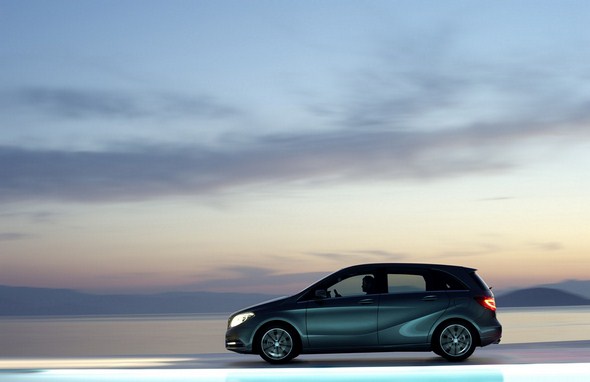
The safety experts at Mercedes-Benz have christened the crack management system on the insides of the B-pillar “vampire teeth”.
In a serious side-on crash, the seat belt retractor presses against the inner wall of the B-pillar. To prevent this from leading to a transverse crack which might affect structural integrity, small, tooth-like recesses define the crack direction.

On all seats: intelligent restraint systems
The B-Class protects its passengers with up to nine airbags. The standard complement comprises driver and front-passenger airbag, a kneebag for the driver, large thorax-pelvis-bags incorporated in the seat to protect the chest, stomach and pelvis area and windowbags.

The windowbags extend over both rows of seats to the A-pillar triangle. They serve to protect the occupants’ heads from hard contact in the event of side impact and can also help to keep limbs inside the vehicle in an accident.
The driver and front passenger airbagsoperate in two stages, according to the expected severity of impact.

The gas generator first of all fills the driver’s airbag with 60 and the front passenger’s airbag with 70 per cent gas. If a more severe impact is forecast, the second stage of the gas generator will additionally be activated after a delay and the airbags will be filled at a higher pressure level. Sidebags for the rear are optionally available.

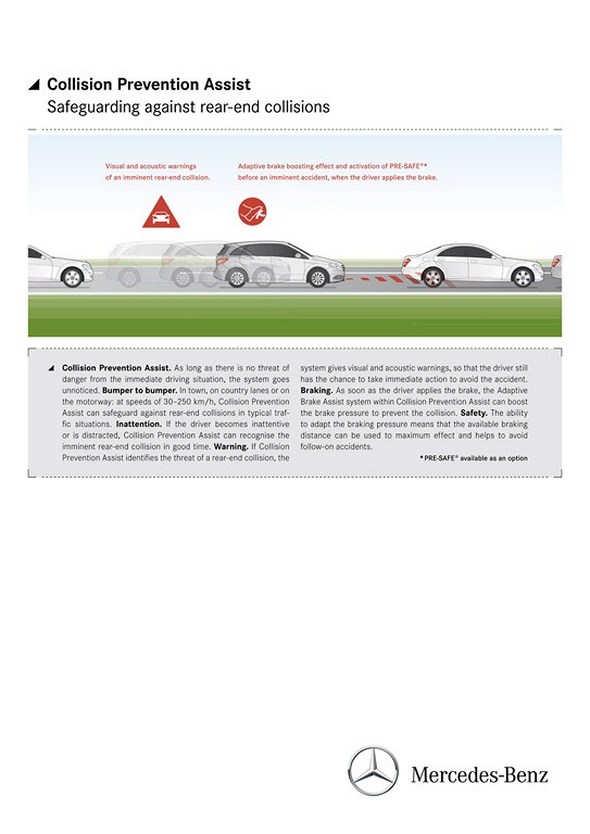












The high safety expertise of the B-Class’s developers is reflected in a host of details. The deformable steering column yields by up to 100 millimetres when the driver exerts pressure on the airbag as a result of forward displacement in an accident, for example.
The comfort features also reveal a fine touch: the driver’s airbag is connected to a vibration absorber in the steering wheel to reduce vibrations, for example.
The head restraints for driver and front passenger are new developments. The onus in developing the new restraints was on further reducing the risk of whiplash injury.
Key to effective whiplash prevention is the best possibleadjustment of the distance from the rears of the occupants’ heads.
The restraint incorporates a button for this purpose on the left-hand side (as seen in the direction of travel). This release mechanism can be pressed to unlock the head restraint and increase the distance between head and head restraint.
The button does not need to be pressed in order to reduce the distance. This enables single-handed operation in all adjustment positions.

Family-friendly: comprehensive precautionary measures in the rear
An exceptional feature in the compact class: belt tensioners and belt-force limiters also feature on the outer rear seats as standard.
The roller mechanism incorporates a torsion bar which turns when the load on the bar exceeds a defined value. In this way it limits the belt force and reduces the strain on the occupants.
The B-Class’s family-friendly features also include Isofix child seat fasteners on the outer seats. Child seats can additionally be fixed to the vehicle by means of special anchorage points with top tethers.
Premiere in the compact class: preventive occupant protection system
The PRE-SAFE® preventive occupant protection system which features in the B-Class is available for the first time in this vehicle category.
This represents a further step in the ongoing democratisation of this innovation, which was premiered in the S-Class in 2002.
PRE-SAFE® from Mercedes-Benz uses the time between detection of a potential accident situation and a possible collision to initiate preventive protection measures, thus reducing the loads exerted on the occupants in the event of a crash by up to 40 percent. Core features of PRE-SAFE® are reversible belt tensioning, the closing of side windows and sliding sunroof when critical lateral dynamics are detected and adjustment of the fully electric front passenger seat with memory function to an ideal position for maximum effectiveness of the restraint systems.
PRE-SAFE® is activated when one of the following parameters is met: emergency braking, panic braking, pronounced over- or understeering, critical steering movements or heavy support by adaptive Brake Assist.
The drive
High tech under the bonnet
- New petrol engine series M270: displacement of 1.6 and 2.0 litres
- New diesel engine OM651/D18: less displacement, less friction
- New 7G-DCT dual clutch transmission: a new quality of automaticgear shifting
- New manual transmission F-SG 310: 6 gears in compact design
- ECO start/stop function: standard on all models
A model change that takes place under the bonnet, too: the new B-Class features new petrol and diesel engines as well as new manual and automatic transmissions.
All transmissions and engines have been developed in-house, with production taking place at the plants in Stuttgart-Untertürkheim and-Hedelfingen, Gaggenau/Baden and Kölleda/Thuringia.
The simultaneous development process enabled perfect coordination of engines and transmissions, e.g. with regard to implementation of the ECO start/stop function which features as standard on all B-Class models.
Common features of the new drive systems are the use of state-of-the-art technologies for maximum efficiency, very smooth running, high tractive power right from low revs, sustainability in terms of impending emissions standards and low weight.
For the purposes of transverse installation the engines, all of which are turbocharged, and the two transmissions are very compactly designed, providing the B-Class with an exemplary small turning circle for a front-wheel drive vehicle of eleven metres.
The engine/transmission suspension by means of two hydro-mounts – an unusual solution in this market segment – and two self-aligning supports provides for unusually good decoupling of the drive units from the body.
The new four-cylinder petrol engines (internal designation M270) mark the launch of a completely new engine series.
The combustion process is based on the third-generation Mercedes-Benz direct injection system which was introduced last year with the BlueDIRECT V6 and V8 engines.
Its use in the B-Class marks this technology’s debut in the compact segment. The new four-cylinder engines have been designed for both transverse and longitudinal installation.
In the new B-Class they are initially available with a displacement of 1.6 litres, as the B 180 rated at 90 kW (122 hp) and the B 200 with an output of 115 kW (156 hp).
Their maximum torque of 200 and 250 Nm respectively is available from an engine speed of 1250 rpm.
The new four-cylinder diesel engine is a further development of the OM651 deployed in the C- to the S-Class, a common rail direct-injection engine of the third generation.
With its displacement scaled down to 1.8 litres and numerous optimised points of detail, this is the first time that the compression-ignition engine has been mounted transversely in a Mercedes-Benz car.
The B 180 CDI generates 80 kW (109 hp) of power, while the B 200 CDI has an output of 100 kW (136 hp). The maximum torque of 250 / 300 Nm is available from 1400 / 1600 rpm.
Another Mercedes-Benz premiere is the new 7G-DCT dual clutch transmissionin the B-Class.
This transmission is extremely compact, extremely variable with regard to adaptation of the engine speed thanks to seven gears, features an electric oil pump for start/stop capability, shifts gear without any interruptions in tractive power and combines the comfort of an automatic with the efficiency of a manual transmission.
The new manual transmission designed along similarly compact lines as a three-shaft transmission is a close relative of the DCT. Extremely easy gear shifting, low shift forces, low internal friction and a low weight are among its most important characteristics.
The new petrol engines: high tech in the compact class
Direct injection with fast-acting piezo injectors for multiple injection, fully variable cam adjustment on the inlet and exhaust side, controlled oil pump, switchable water pump, high compression (10.3:1) despite turbocharging, scavenging for instantaneous turbocharger response, fast and convenient start/stop system – the technical details of the new generation of four-cylinder petrol engines read like a catalogue illustrating the fine art of high techengine construction.
With regard to the combustion process, the new all-aluminium engines with two overhead, chain-driven camshafts are closely related to the BlueDIRECT V engines which were originally introduced in the S-Class in mid-2010 and have since been setting new benchmarks worldwide in terms of performance and fuel consumption under everyday conditions in the luxury and top-range models from Mercedes-Benz.
Direct petrol injection with spray-guided combustion, which Mercedes-Benz was the first car manufacturer to introduce in series production, has been developed further by the engineers into third-generation direct petrol injection with spray-guided combustion.
The system pressure is up to 200 bar and is variably optimised according to the engine’s characteristic map.
Completely newly developed piezo-electric injectors allow up to five injections per power stroke for the best possible mixture formation, while multi-spark ignition helps to ensure reliable combustion of the mixture.
The upshot is outstanding fuel efficiency combined with minimal emissions.
In conjunction with continuous adjustment of the intake and exhaust camshaft, the direct injection system also provides the essential basis for so-called scavenging.
As a result of a partial overlap of the opening times of intake and exhaust valve, part of the drawn in cold fresh air conveys the hot exhaust gas contained in the cylinder into the exhaust manifold, thereby improving the filling level substantially in comparison to the conventional mode of operation.
Due to the increased mass flow in the exhaust line, the turbocharger additionally responds considerably more quickly at low revs in particular, avoiding turbo lag.
As a result of the direct injection system, the fresh air is not yet mixed with fuel on entering into the cylinder, as is the case in engines with intake manifold injection.
This avoids scavenging losses, that is, the escape of uncombusted petrol into the exhaust manifold. The new four-cylinder engine in the B-Class supplies its maximum torque right from an engine speed of 1250 rpm, for example, maintaining this maximum level up to 4000 rpm.
In conjunction with the new 7G-DCT transmission, whose control system communicates with the engine control unit, the new four-cylinder engine responds highly spontaneously to movements of the accelerator pedal, while during cruising higher gearing can be selected, thereby further reducing fuel consumption and noise.
The turbo engines also retain their exemplary fuel efficiency at high load levels, as the mixture does not require enriching to cool the cylinder head up to a speed of 200 km/h (full-load enrichment).
A two-piece water jacket with optimum cross-flow cooling and fine cooling ducts measuring only three millimetres between spark plugs and injectors convey the cooling fluid to the critical points.
A new thermal management system has also been developed: in cold state, a switchable water pump with flow-optimised ball valve ensures that no coolant flows through the engine, providing for swift heating-up of the combustion chambers after starting up the engine.
The thermostat is electronically controlled and the coolant temperatures are adjusted according to driving style and ambient conditions.
The thermostat itself is also a flow-optimised ball valve. In the interest of high efficiency, the volumetric flow of the oil pump is also controlled, as in the V engines.
The new four-cylinder generation features cylinder spacing of 90 millimetres and is highly compact in design, thanks to the expedient arrangement of the power take-off units.
The variant to be unveiled at the premiere with a displacement of 1.6 litres features a short stroke of 73.7 mm with a bore of 83.0 mm. The hollow crankshaft is a further factor contributing to the low weight of 137 kg.
Overview of technical data for the B-Class with petrol engine:
| Model | B 180BlueEFFICIENCY | B 200BlueEFFICIENCY | |
| Cylinderarrangement/number | 4/in-line | 4/in-line | |
| Displacement | [cc] | 1595 | 1595 |
| Rated output | [kW/hp] at [rpm] | 90/1225000 | 115/1565000 |
| Rated torque | [Nm] at [rpm] | 2001250-4000 | 2501250-4000 |
| Fuel consumption, combined | [l/100 km] | 5.9 | 5.9 |
| CO2 emissions,combined | [g/km] | 137 | 137 |
The new diesel engines: direct-injection models with displacement of 1.8 litres
Since its world premiere in 2008 the fourth-generation direct-injection diesel engine known as the OM651 has been setting standards in terms ofperformance and torque characteristics, economy, emissions and smooth running.
It is in more widespread use than any other Mercedes-Benz diesel engine and serves as a model of efficiency and power right up to the S-Class.
A new variant with a displacement of 1.8 litres is now being introduced into the compact car segment for the first time on board the B-Class.
The belt drive for the power take-off units, the turbocharger mounting position and the air ducting have been modified for the purposes of transverse mounting.
With a cylinder spacing of 94 millimetres and camshafts driven via spur gears, transverse mounting and the appurtenant short design formed part of the specification for the engine from the outset.
The displacement was reduced by shortening the stroke (83 mm instead of 99 mm). The markedly longer connecting rods provide for a reduction in friction induced by lateral forces. the two Lanchester balancer shafts havealso been optimised for reduced friction.
The efficiency of the new, single-stage turbocharger has been optimised. It possesses adjustable guide blades.
Combining the engine control unit with the control system of the 7G-DCT involved a great deal of coordination work. Similarly to its big brothers in their latest version, the engine incorporates isolation between belt drive and crankshaft to enable implementation of the start/stop function. Other common features are
- common rail technology with a rail pressure increased to 1800 bar.The maximum ignition pressure of 200 bar also contributes to the high power output.
- The oil injection nozzles and the water pump are activated only when required, in order to save energy and fuel. The controlled oil pumpadditionally reduces oil flow and thus fuel consumption.
- The engine block is made of cast iron, the cylinder head of aluminium.
- A two-piece water jacket in the cylinder head provides for optimum cooling in the area of the combustion chamber plate. This enables an ignition pressure of 200 bar and a high specific power output.
- The cast iron barrels have undergone considerably finer honing than on the predecessor, also contributing to the reduction in fuelconsumption.
- To compensate for the second-order forces which are inherent to four-cylinder in-line engines there are two Lanchester balancer shafts at the bottom of the engine block running in low-friction roller bearingsrather than conventional plain bearings.
- The two-mass flywheel has been specifically designed for high engine torque at low engine speeds in order to isolate the crankshaft’svibration stimuli, thereby contributing to the engine’s excellent smooth running.
Overview of technical data for the B-Class with diesel engine
| Model | B 180 CDI BlueEFFICIENCY | B 200 CDIBlueEFFICIENCY | |
| Cylinderarrangement/number | 4/in-line | 4/in-line | |
| Displacement | [cc] | 1796 | 1796 |
| Rated output | [kW/hp] at [rpm] | 80/1093200-4600 | 100/1363600-4400 |
| Rated torque | [Nm] at [rpm] | 2501400-2800 | 3001600-3000 |
| Fuel consumption, combined | [l/100 km] | 4.4 | 4.4 |
| CO2 emissions,combined | [g/km] | 114 | 115 |
The 7G-DCT dual clutch transmission: convenient and efficient
Drawing on over 50 years of experience in the development and production of automatic transmissions, Mercedes-Benz is venturing into new technical territory with the 7G-DCT dual clutch transmission: the new system is an automated three-shaft manual transmission consisting of two subtransmissions, each with its own clutch.
Both actuation of the clutches and gear shifting take place fully automatically and without any interruption in tractive power. This enables a particularly comfortable but neverthelessdynamic mode of driving.
Thanks to its seven gears it offers an exceptionally large spread of up to 7.99. This means that a very short transmission ratio is available when moving off on an uphill slope with a high payload, for example, while during cruising the engine speed can be lowered considerably.
This transmission is nine percent more efficient than the CVT employed in the B-Class to date and attains the efficiency of a manual transmission for the first time.
At a length of 367 millimetres and a weight of 86 kilograms, the 7G-DCT is more compact and lighter than the transmissions which have been available on the market to date.
The clutches take the form of “wet” multi-disc clutches running in an oil bath. The specially developed hydraulic fluid is actively cooled, thus ensuring correct functioning of the transmission even under extreme conditions, despite the comparatively low filling level of six litres.
For the first time on this type of unit, the transmission is supplied with oil by two oil pumps – one mechanical and one electric.
The electric pump maintains the oil pressure when the engine is switched off via the start/stop function. This means that the transmission is immediately operational when the engine is restarted and the vehicle can move off again without any delay.
In addition, the electric pump is able to support the mechanical pump when peak loads apply, enabling a more compact and efficient design for the mechanical pump.
Another new feature is electrical activation of the hydraulics for the parking lock, which is locked by mechanical means.
This “park by wire” function enables the transmission selector lever to be positioned as desired: it is located in the form of a steering column lever on the right behind the steering wheel in the B-Class.
In combination with the electric parking brake, additional space has thus been created in the centre console for additional stowage facilities.
Three gearshift programmes are available to the driver:
- ECONOMY: In this mode, the transmission performs gear shifting fully automatically and particularly conveniently. The gears are selected with due regard to a particularly economical style of driving at low revs.
- SPORT: The transmission performs gear shifting fully automatically in this mode, too.The shift and response times are shorter, however.
- MANUAL: In this mode, the driver operates the transmission manually via shift paddles behind the steering wheel. Shift and response times are shorter still.
In ECO or Sport mode, the driver is still able to intervene manually in the gear-shifting process via the shift paddles.
The transmission reverts to the selected automatic mode after the paddles have remained inactive for ten seconds, or after a longer delay when driving downhill or on winding roads.
A key factor contributing to the overall efficiency of the B-Class is the closely coordinated operation of the transmissions and engines.
A continuous exchange of data between the control units ensures that the engines run at the ideal operating point at all times. The 7G-DCT is manufactured at Daimler’s Stuttgart-Hedelfingen plant.
The six-speed manual transmission: convenient manual gear-shifting
The new six-speed manual transmission has been developed alongside the 7G-DCT. The two transmissions share a large number of components and are both produced in Hedelfingen.
This three-shaft transmission is also very compact (length 345 mm) and light (dry weight 46 kg) and incorporates a number of special features for particularly pleasant gear shifting.
An integrated magnet on the gearshift shaft is detected by a Hall sensor. The idle position is identified in this way, enabling the start/stop function. The signal for reverse gear activates the reversing lights.
The large spread of 6.7 allows a reduction in engine speed while at the same time ensuring that sufficient tractive power is available when moving off with a fully laden B-Class and trailer up to a gross weight of 3.4 tonnes.
The clutch is operated hydraulically and the gears are actuated via cables.
The overhead camshaft with third and fourth gears and the reverse gear do not run in the oil bath. This reduces drag torque, thus facilitating gear shifting at low temperatures in particular.
The three-cone synchronisation of the first two gears serves the same purpose, while the following gears are provided with two-cone synchronisation.
The weight-optimised cast aluminium shift forks are installed on anti-friction bearings on the shift rods, in order to reduce the shift forces.
The chassis and suspension
Refined sportiness for the sports tourer
- Chassis and suspension: new four-link rear axle, sporty ESP® tuning
- Steering: new electric power steering with assistance functions
- Brakes: electric parking brake improves overall package
“Fascinatingly agile” is the assessment of all test drivers who have put thenew B-Class through its paces to date.
Three factors are instrumental to the substantially enhanced dynamic performance in comparison to its predecessor, which does not come at the cost of any compromises on comfort: the lowered centre of gravity, the new four-link rear axle and the upgraded ESP® Electronic Stability Programme.
On the four-link rear axle, the arising forces are absorbed by three control arms and one trailing arm per wheel. This means that longitudinal and lateral dynamics are virtually independent of one another.
Wheel carriers and spring links consist of aluminium, in order to reduce the unsprung masses.
Mercedes-Benz is deploying the latest ESP® generation – ESP® 9 – in theB-Class for the first time. Torque Vectoring Brake helps to counter the tendency towards oversteering during fast cornering. Specific steering impulses (see below) assist the driver.
The engineers’ overall aim has been to provide gentle intervention by the ESP® system which will always afford the B-Class’s occupants protection, without detracting from the pleasures of driving: experienced motorists can drive very speedily, while less experienced drivers with a less well-rounded driving style will be receive a timely reminder of the physical limits involved in driving.

Steering: mechanical with electric assistance
The electromechanical steering of the B-Class has been redesigned. The electric motor of the servo assistance system is now located directly on the steering gear as a dual pinion EPS system.
The steering system makes an important contribution to the vehicle’s overall efficiency, as the steering assist function only requires energy when steering actually takes place.

A Direct-Steer system is available in combination with the sports package. Locating the EPS system here results in a noticeably more direct steering ratio over the turning angle with the aid of the variable ratio.
This enhances the vehicle’s handling and agility substantially. The electric power steering also enables various steering assistance functions which are activated by the ESP® control unit. These include:
- Countersteering in case of oversteering
- Corrective steering when braking on road surfaces offering different levels of grip (split-fraction braking)
- Mitigating the extent to which the front-wheel drive influences the steering
- Compensating crosswind and road gradients
- The electric power steering also makes Active Park Assist possible.

With a turning circle of eleven metres in diameter, the B-Class is particularly agile.
On all engine variants, the B-Class comes with disc brakes on all wheels. The callipers on the rear axle and the brake boosters are made of aluminium.
For the first time in the compact class, the HOLD function which is familiar from the larger model series has been adopted into the B-Class: when stopping, for example at traffic lights, the driver merely has to press the brake pedal slightly more firmly and the brake will remain engaged until he moves off again.
The brake is released automatically when the driver steps on the accelerator. On versions with manual transmission, the Hill Hold function automatically prevents the vehicle from rolling back unintentionally when starting on a slope.

Mercedes-Benz is equipping the B-Class for the first time with an electric parking brake, which operates by means of actuator motors acting on the callipers of the rear axle.
The parking brake is activated via a button under the light switch on the left of the dashboard.
This creates additional space in the centre console, as the handbrake lever is no longer required. When the button is pressed at speeds of over four km/h, the parking brake acts as an emergency brake, activating all four wheel brakes via the ESP®‘s hydraulic unit.

In conjunction with the automatic transmission, the parking brake offers a particularly convenient mode of functioning: when the driver accelerates sufficiently after fastening his seat belt, the parking brake is releasedautomatically.

Under the microscope
Getting home safely with a flat tyre
The B-Class is the first Mercedes-Benz model to do without a spare wheel well. This saves space and weight – the latter contributing to efficiency. In western and central Europe, all versions come as standard with the TIREFIT system comprising tyre sealant and an electric pump as well as a tyre pressure loss warning system which displays a warning in the instrument cluster in the event of a marked pressure loss.

Input variables for the system are the speeds of the four wheels, which are recorded by the ABS sensors. A relative comparison of all measured wheel speeds reveals the divergent speed of a wheel in the event of a pressure loss in the tyre.
As wheel speeds are also influenced by other dynamic variables, such as tyre slip, slip angle or cornering, the sensor signals from driving assistance systems such as ESP® and ADAPTIVE BRAKE (including ABS and ASR) also receive due consideration in assessing the wheel speeds.

Tyres with run-flat capability are optionally available. These so-called MOE tyres (“Mercedes Original Extended”) feature the latest generation of run-flat technology, offering the same ride comfort as conventional tyres, despite reinforced sidewalls.
In the event of a flat tyre, the journey can be continued at 80 km/h.
The possible range is then around 30 kilometres then there is no air pressure whatsoever in the tyre concerned, or otherwise up to 300 km – sufficient to return safely home or to reach a Mercedes-Benz partner.
The MOE can be combined with all light-alloy wheels which are available for the B-Class.
The new generation of multimedia
Low-price navigation and mobile internet
- COMAND Online multimedia system optionally available withinternet access
- Two navigation solutions for different budgets
- Convenient connection facilities for mobile audio devices
Internet access, the convenient LINGUATRONIC voice control system, two navigation solutions tailored to different budgets, connection for mobile audio devices and an intuitive operating concept – the information and communication systems in the B-Class offers excellent user-friendliness and a superior level of functionality which has been the reserve of higher categories of vehicle to date.

These standards are delivered by the new multimedia generation from Mercedes-Benz, which was premiered only this summer in the C-Class Coupé and the facelifted C-Class.
The operating concept featuring the turn/push control in front of the armrest and the control knob on the head unit is also familiar from other Mercedes model series.
Individual functions are operated by means of the steering wheel: the standard multifunction steering wheel comes with 12 function buttons.
A special feature in the B-Class is the positioning of the colour screens with a diagonal of up to 17.8 cm, which are installed in free-standing configuration at the top of the dashboard, above the central air vents.
The aerials are distributed invisibly throughout the vehicle: an integrated AM/FM aerial and a GPS antenna is fitted under the roof spoiler in front of the rear window, an additional aerial for FM is integrated in the rear window structure and eventhe telephone aerial is concealed in the rear spoiler.
Overview of the various devices and their functions:
The standard specification includes the Audio 20 CD system with a twin tuner, mp3-capable CD player and a USB connector in the centre console. The colour display has a diagonal of 147 mm.
Thanks to a new “Cover Art” function, the title images of the music albums currently being played are shown if their details are stored in the audio file.
A new top line in the Audio 20 CD’s menu navigation makes orientation easier and can be operated via the controller. The settings for the air conditioning are also displayed on the telematics screen (when in use), as is the fuel consumption over the past 15 minutes.
The Bluetooth functions have also been extended: the mobile’s phone book can now be automatically transferred en bloc when connected, and wireless music reproduction is possible from Bluetooth-capable terminals.
Plus text messages can also be displayed. As an optional extra the Audio 20 CD can be combined with a 6-disc CD changer, Media Interface, sound amplifier (please see below for details), Convenience Telephony in the armrest, digital radio DAB) and the new Becker® MAP PILOT entry-level navigation solution.
The Becker® MAP PILOT makes a low-cost navigation function, which can also be retrofitted, available for the entry-level Audio 20 CD radio.
Its advantages over aftermarket solutions include integrated operation via the central controls, voice output via the vehicle’s loudspeakers and display on the Audio 20 screen, a concealed location in the glove compartment and updating via an internet portal.
The COMAND Online multimedia system offers internet access. Customers can either surf the web as they wish while the car is stationary or call up a Mercedes-Benz app whose particularly fast page loading and simple operation make it suitable for use while driving.
Integrated apps include Google™ Local Search and Weather and the facility for downloading a route which haspreviously been configured on a PC using Google Maps and transmitted to the car.
Apps for Google™ Streetview and Google™ Panoramio will be available for COMAND Online from the autumn. Streetview enables locations all over the world to be seen in 360-degree perspective views and at street level.
Panoramio allows access to millions of photographs which have been taken and uploaded by other uses at locations all around the globe.
Streetview and Panoramio thus provide comprehensive means of studying routes and checking out sights and destinations before embarking on a journey.
Mercedes-Benz apps will be introduced gradually and then all customers will be able to use them. Telephones which can be used with COMAND Online apps are listed at www.mercedes-benz.com/connect
The high-resolution colour display has a diagonal of 17.8 cm. Photos can be shown on the large screen and turned over manually, as in a slide show.
Where the audio equipment is concerned, too, new types of representation bring a fresh look and more convenient operation.
The new Cover Flow function, for instance, sorts the title images of the music albums stored in a carousel-like form, so that the B-Class driver can easily leaf through their music collection – even if it is rather on the large side: the memory for compressed audio files (mp3, wma and aac formats) is now 10 GB in size.
Greatest convenience is afforded by the Music Search function, which enables drivers and passengers to search the hard disc, SD memory cards, USB sticks, CDs and DVDs for specific music tracks and artists.
The search can be according to various criteria, for instance album, music category or composer.
If a name needs to be entered, the software will also tolerate spelling mistakes. The driver is therefore able to devote their full attention to the traffic.
As a further advantage, the occupants are able to search all the connected media and devices simultaneously.
The fast hard-disc navigation system of COMAND Online also has added functions. New features include a 3D display with three-dimensional city views.
Also new: routes covered can be recorded and repeated later, specific personal destinations can be imported via an SD card and four alternative routes can be displayed on the navigation map, one of them a particularly economical variation.
Mercedes-Benz customers in Europe receive the current maps for their COMAND Online multimedia system free of charge for three years.
Authorised Mercedes-Benz dealers upload the updates for navigation data in 39 European countries into the navigation system when the customer visits their premises.
In Europe, COMAND Online also comprises Speed Limit Assist, which receives its information for traffic sign recognition via a camera and navigation database.
COMAND Online also includes the LINGUATRONIC voice-operated control system for audio, telephone and navigation.
The new “One Shot” input function for the navigation system is particularly onvenient, whereby the place and road can be said directly after one another. This function is currently available in seven languages and significantly enhances ease of operation.
Mercedes-Benz developed the “Logic7” surround sound system together with the audio specialist harman/kardon®.
Based on technology never before seen in a car, this high-end system delivers three-dimensional sound as a natural 360-degree musical experience for all passengers.
The audio signals are distributed via a 450-watt 9-channel DSP amplifier connected to twelve high-performance loudspeakers.
In conjunction with COMAND Online a multi-channel listening experience with Dolby Digital 5.1 and DTS is possible.
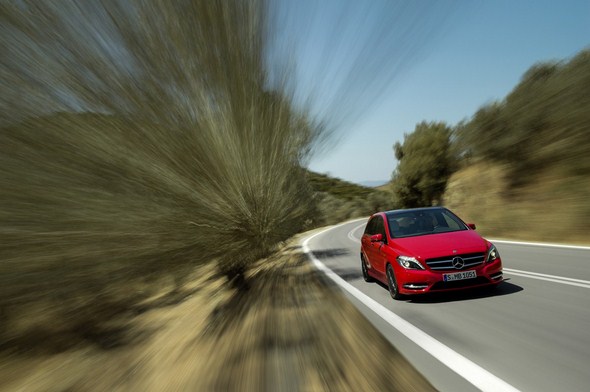
The Media Interface is available as an optional extra. The universal interface under the armrest enables mobile audio devices such as mp3 players or iPods to be connected to the vehicle’s telematics system.
These devices are then operated via the head unit or the multifunction steering wheel.
Depending on the mp3 player in use, it is possible to recharge the device’s battery via the vehicle’s on-board electrical system.
When the song title/artist and album name are available, these can be shown on the display.
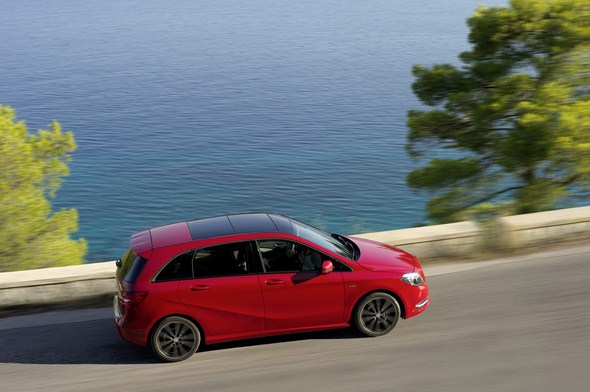
Under the microscope
A successful player in the premium compact vehicle segment
Mercedes-Benz is already a successful premium manufacturer of compact vehicles with its A- and B-Class. Over 2.8 million A- and B-Class models have rolled off the production line since the launch of the A-Class in 1997 and the B-Class in 2005.
The launch of the B-Class from Mercedes-Benz in 2005 laid the foundations for a new, future-viable market segment, attracting more than 700,000 delighted customers worldwide.
The B-Class continues to enjoy great popularity in the year of the model change. 73,046 vehicles were delivered to customers between January and the end of August this year. This corresponds to a growth rate of 7.6 percent.
In Germany, the largest market for the B-Class, sales rose by 5.6 percent over the same period. The second-largest market for the B-Class is China, where it was launched with great success in 2009.
This year alone has seen sales rise since January in the order of 46.8 percent, to 9738 units.
The Mercedes-Benz management team on the B-Class:
“Premium is not a matter of size”
“The inventor of the automobile is continuing to revamp its model range apace. 2011 ses Mercedes-Benz Cars launching an offensive on the compact segment with the new B-Class. The global market in this segment is set to rise from the present 19 million units to almost 34 million units annually by the end of the decade. In view of this trend, we at Mercedes will be offering five models in the compact class in future, rather than the two which have been available to date. The new B-Class shows that premium is not a matter of size; it’s all about high-class appeal, quality and style.”
Dr. Dieter Zetsche, Chairman of the Board of Management at Daimler AG and Head of Mercedes-Benz Cars
“No model change in the history of Mercedes-Benz has ever seen so many new developments introduced in one fell swoop. Future B-Class customers will benefit from this quantum leap in terms of exemplary low fuel consumption and CO2 emissions combined with driving pleasure, plenty of space and the customary high standard of safety from Mercedes-Benz.”
Prof. Dr. Thomas Weber, Member of the Daimler Board of Management, responsible for Group Research and Mercedes-Benz Cars Development
“With the new B-Class and additional sporty and emotional variants we aim to further boost our market share in this segment and to tap new customer categories and market regions. The new B-Class shows that “The best or nothing” works below the C-, E- and S-Class, too.”
Dr. Joachim Schmidt, Executive Vice President Mercedes-Benz Cars
Sales and Marketing
“High-quality materials and finely structured surfaces, stylish details, precision workmanship and a new spaciousness – the interior of the B-Class defines a whole new benchmark in the compact segment. Many features have been the reserve of higher classes of vehicle to date and embody Mercedes-Benz’s special understanding of quality and aesthetics.”
Prof. Gorden Wagener, Head of Design, Mercedes-Benz Cars





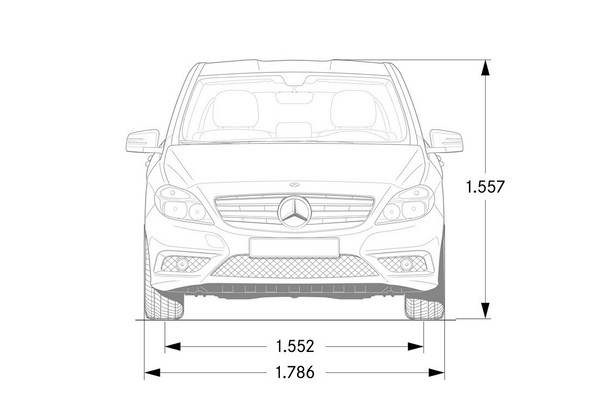







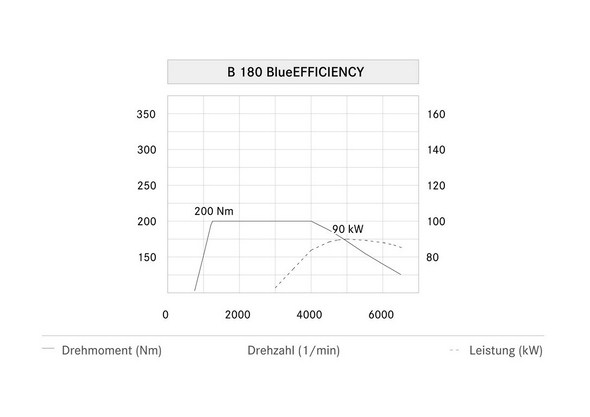








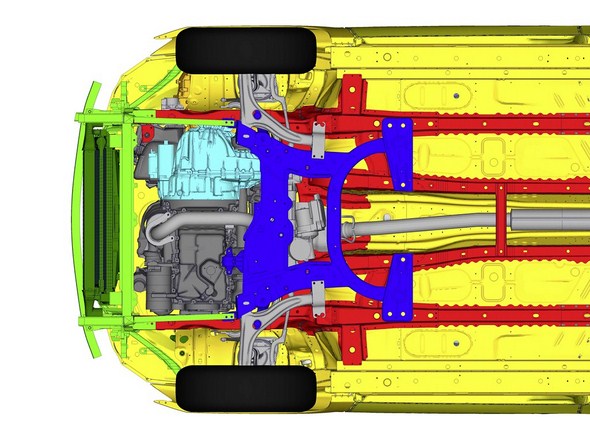




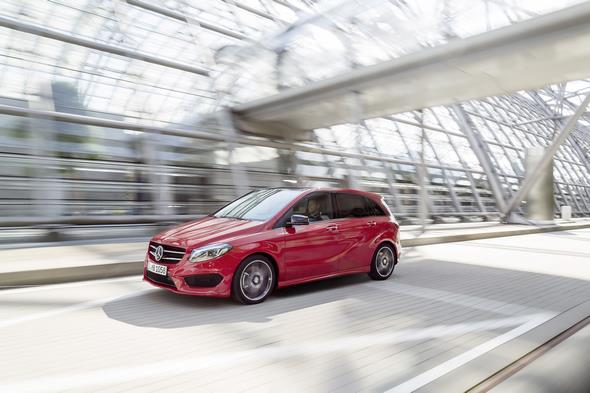
B 250 4MATIC (W 246) 2014, jupiter red, AMG Line

B 250 4MATIC (W 246) 2014, jupiter red, AMG Line

B 250 4MATIC (W 246) 2014, jupiter red, AMG Line

B 250 4MATIC (W 246) 2014, jupiter red, AMG Line

B 250 4MATIC (W 246) 2014, jupiter red, AMG Line

B 250 4MATIC (W 246) 2014, jupiter red, AMG Line

B 250 4MATIC (W 246) 2014, jupiter red, AMG Line

B 250 4MATIC (W 246) 2014, jupiter red, AMG Line

B 250 4MATIC (W 246) 2014, jupiter red, AMG Line

B 250 4MATIC (W 246) 2014, jupiter red, AMG Line

B 250 4MATIC (W 246) 2014, jupiter red, AMG Line

B 250 4MATIC (W 246) 2014, jupiter red, AMG Line

B 250 4MATIC (W 246) 2014, jupiter red, AMG Line

B 250 4MATIC (W 246) 2014, jupiter red, AMG Line

B 250 4MATIC (W 246) 2014, jupiter red, AMG Line

B 250 4MATIC (W 246) 2014, jupiter red, AMG Line
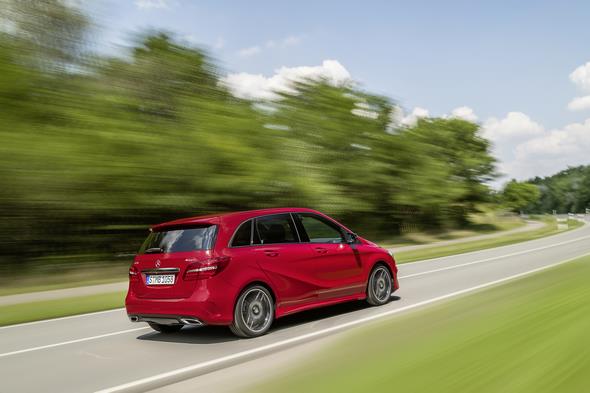
B 250 4MATIC (W 246) 2014, jupiter red, AMG Line

B 250 4MATIC (W 246) 2014, jupiter red, AMG Line

B 250 4MATIC (W 246) 2014, jupiter red, AMG Line, interior, RED CUT black leather

B 250 4MATIC (W 246) 2014, jupiter red, AMG Line, interior, RED CUT black leather

B 250 4MATIC (W 246) 2014, jupiter red, AMG Line

B 250 4MATIC (W 246) 2014, jupiter red, AMG Line

B 220 CDI 4MATIC, B-Class Electric Drive, B 250 4MATIC (W 246, W 242) 2014

B 250 4MATIC (W 246) 2014, jupiter red, AMG Line, studio

B 250 4MATIC (W 246) 2014, jupiter red, AMG Line, studio
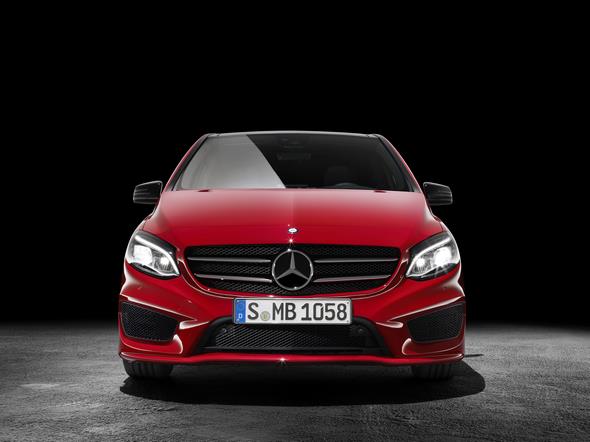
B 250 4MATIC (W 246) 2014, jupiter red, AMG Line, studio

B 250 4MATIC (W 246) 2014, jupiter red, AMG Line, studio

B 250 4MATIC (W 246) 2014, jupiter red, AMG Line, studio

B 250 4MATIC (W 246) 2014, jupiter red, AMG Line, interior, RED CUT black leather
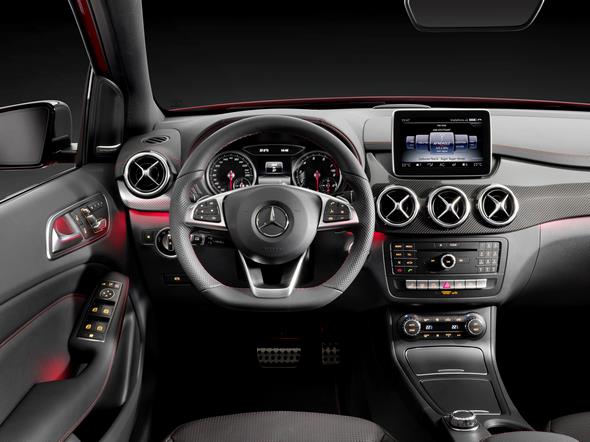
B 250 4MATIC (W 246) 2014, jupiter red, AMG Line, interior, RED CUT black leather
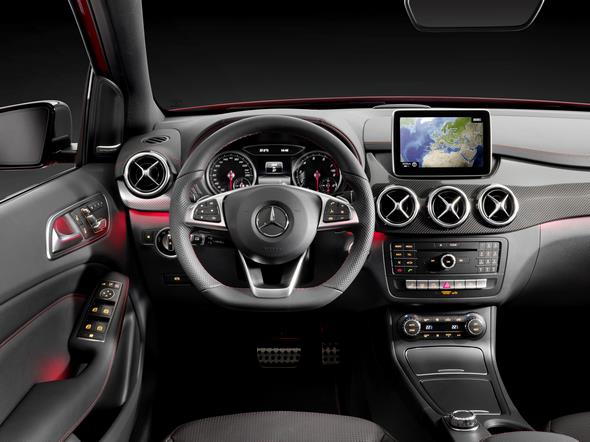
B 250 4MATIC (W 246) 2014, jupiter red, AMG Line, interior, RED CUT black leather
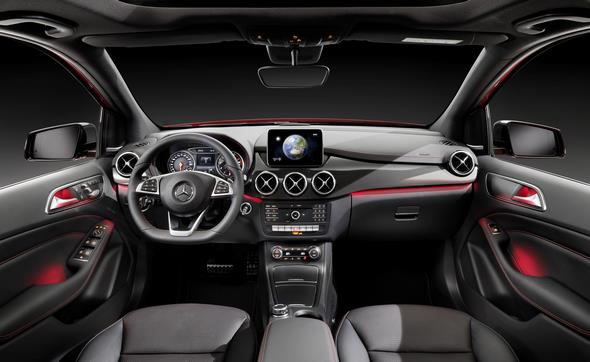
B 250 4MATIC (W 246) 2014, jupiter red, AMG Line, interior, RED CUT black leather
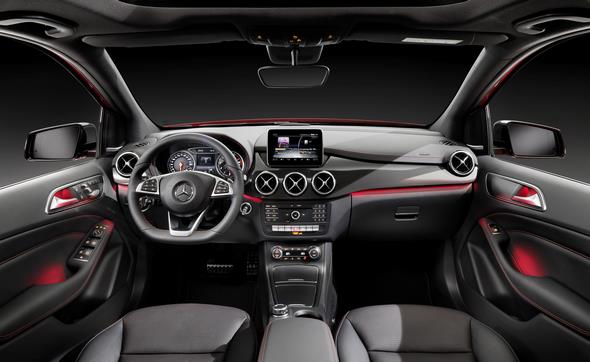
B 250 4MATIC (W 246) 2014, jupiter red, AMG Line, interior, RED CUT black leather
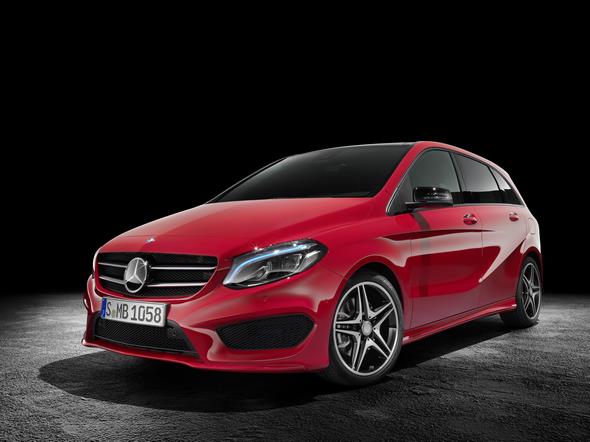
B 250 4MATIC (W 246) 2014, jupiter red, AMG Line, studio
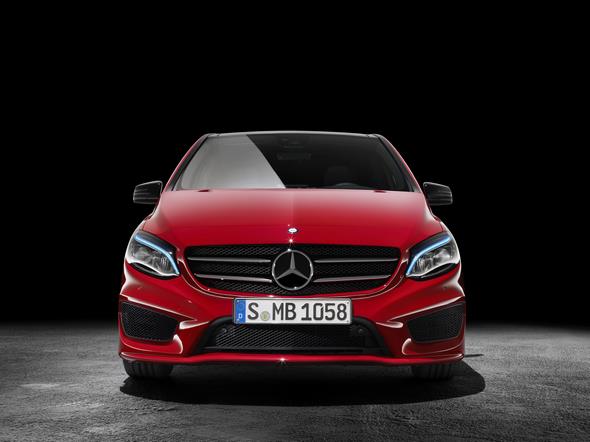
B 250 4MATIC (W 246) 2014, jupiter red, AMG Line, studio
